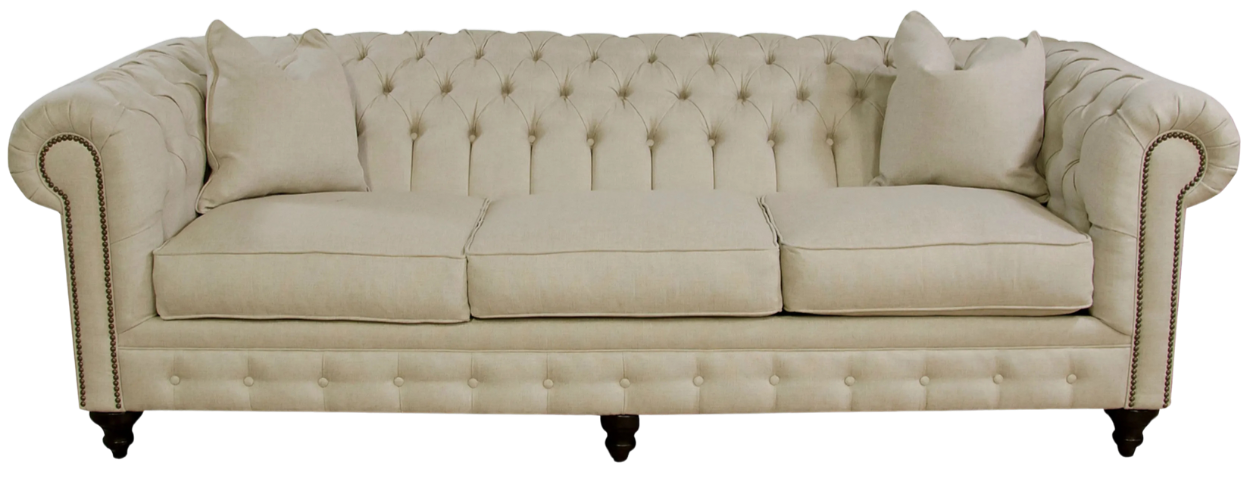Your Cart is Empty
RUGS
FURNITURE
Types of Rugs and Weaving Techniques

A rug is the only piece of art you are allowed to eat, sleep and step on. It takes up the largest portion of your floor and a rug is a little mysterious. For example, how was the rug weaved? What is the difference between knotted, loomed and tufted? In this article, we peel back the mystery and focus on the major types of rugs and weaving techniques used to make them.
TYPES OF RUGS | WEAVING TECHNIQUES
Before we being, we need to review a little rug terminology.
Warp: The vertical yarn attached to the upper and bottom beam. The warp is the foundation of the rug.
Weft: The horizontal yarn passed through the rug. These are the building blocks to the rugs structure.
Pile: Is the thickness of the rug from the base.
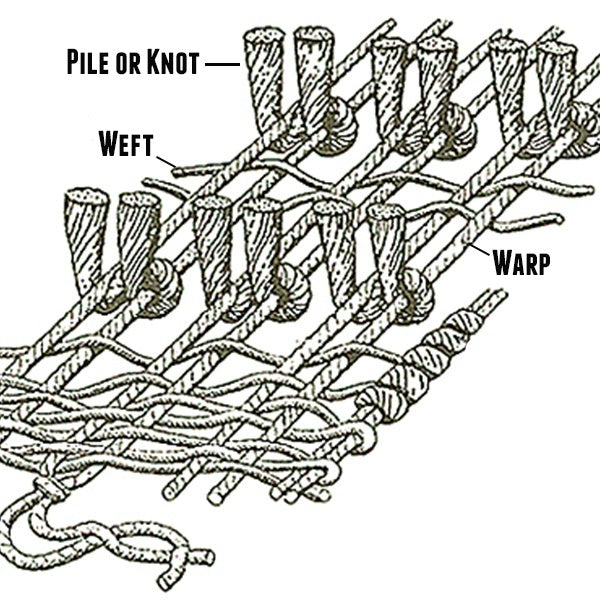
HAND KNOTTED RUGS
These are your traditional Persian rugs. A knot is created using the following steps.
- Pass the yarn through one vertical warp on the left side.
- Bring it back to the front on the right side of the warp.
- Pass it though the right side of the next warp on the left.
- Finally, bring it back to the front on the left side.
That creates one knot and it can now be cut. This is a little complicated but the photo below will help.
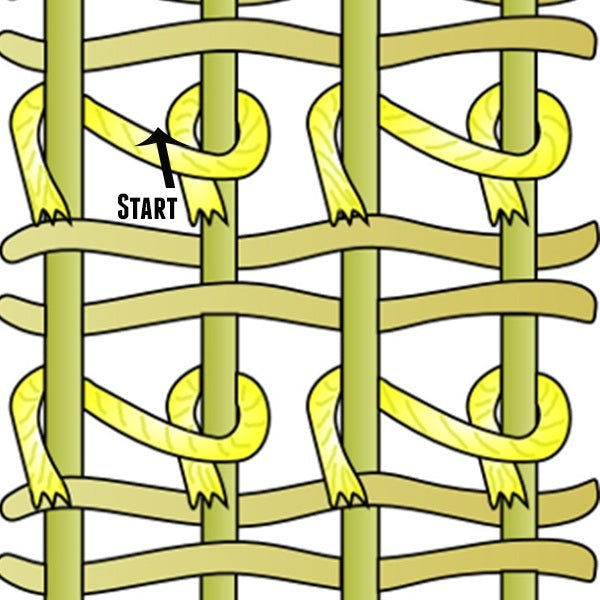
One 8x10 rug can have anywhere between 1 to 6 million knots or 100 to 800 knots per square inch. The average time to make an 8x10 hand knotted rug is over 3000 hours for one person. That is equivalent to 384 working days.
HAND LOOMED AND FLAT WEAVE
These are done on a loom and the process takes 1-4 people depending on the size of the rug. On the loom, the yarn or weft is thrown through the middle of the bottom and top warp. The weaver then compacts the rug with the beater and the weft and warp are woven together. This alone is considered a flatweave.
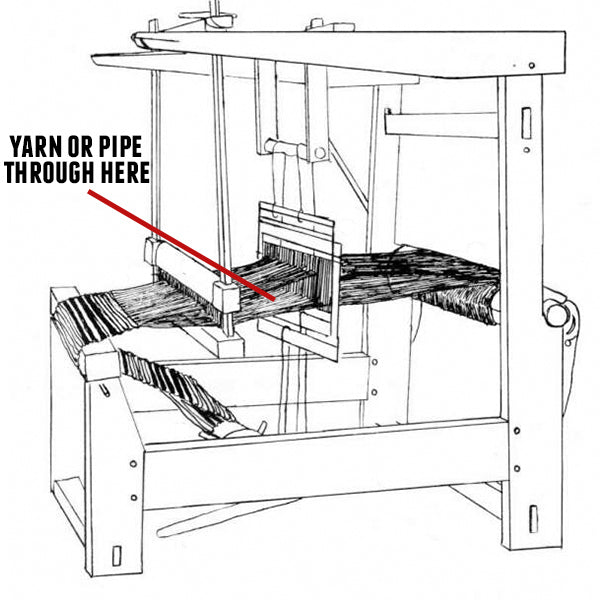 [source]
[source]
A pile is the difference between a flatweave and a loomed rug. To make the pile, the weaver uses the same technique as discussed above but, instead of yarn, the weaver places a rod or pipe through the middle of the warp. This lifts the yarn and creates a pile. The weaver will use both techniques (yarn and pipe) interchangeably throughout the rug. To finish, the loops created by the pipe are either left or cut to have a fuller finish.
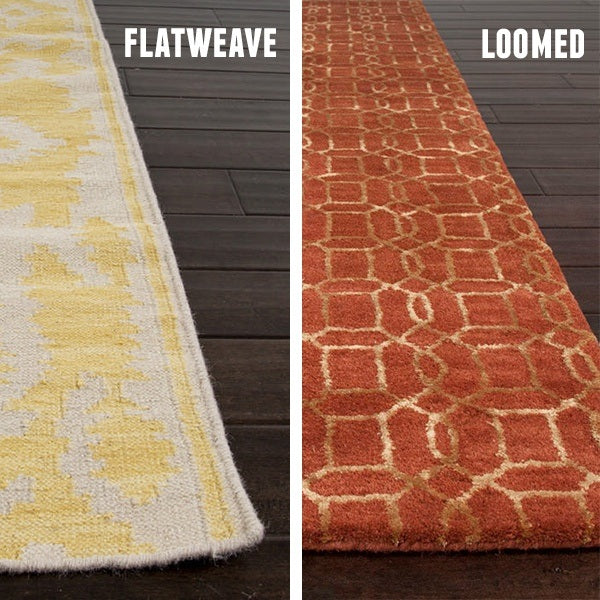
HAND TUFTED RUGS
Tufted rugs are similar to loomed rugs but built in different ways. Instead of starting with a warp and making the weft using the loom, a tufted rug starts with a foundation cloth. The foundation cloth is pre-woven fabric with small squares.
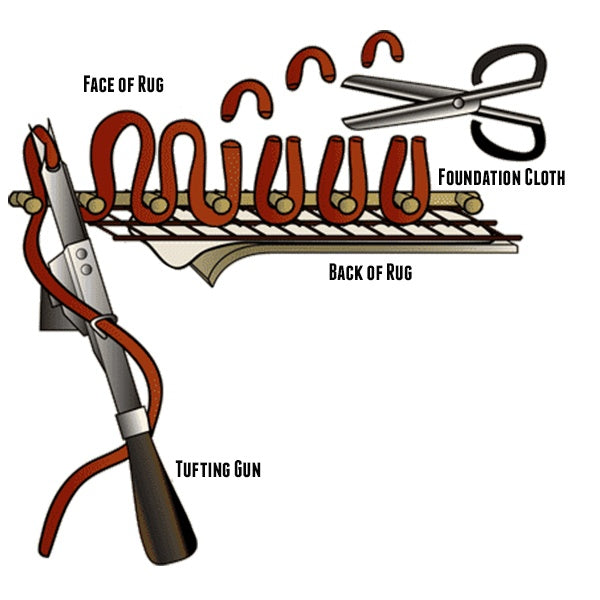
[source]
The foundation cloth is then hung and stretched tight. From here, a tufting gun is used to create the design. The yarn is shot (from the tufting gun) through the back of the rug to the front. The yarn is then cut or shaved and the pile is created.
By using a foundation cloth, you do not have to adhere to the normal rug building structure of row by row. The design can be made sporadically and enables the weaver to make more precise designs. Instead of building a mosaic from the bottom up, you can make individual pieces one at a time.
HAND HOOKED RUGS
Hand hooked rugs are also made on a foundation cloth and a rug hook tool is used.
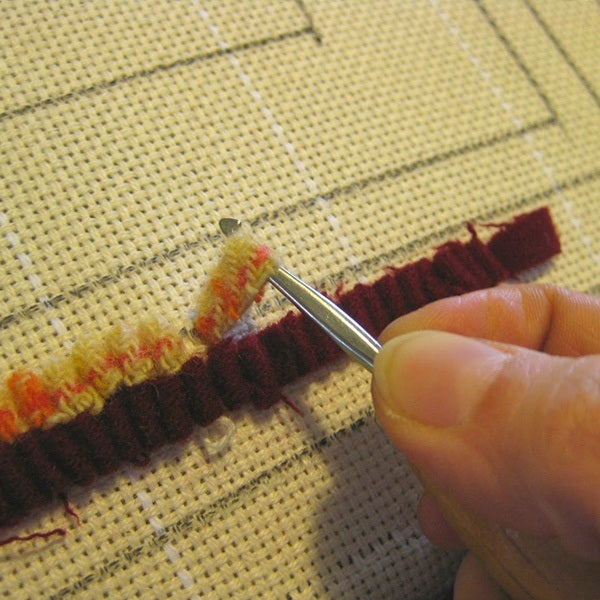
[source]
The tool is pushed through the front of the fabric, it then grabs the yarn on the back and pulls it back to the front of the rug. The process makes individual loops and reminds me of 7th grade art class.
FLATWEAVE RUGS
Besides a loomed flatweave, which was discussed under the Hand Loomed section above. A flatweave can also be made with a knot.
[Loomed flat weave]
Hand knotted flatweaves are made very similar to hand knotted Persian rugs. The weaver uses the Persian knot but instead of the yarn being cut after the second loop, the same knot is continued. This technique is commonly used interchangeable with a regular Persian knot and is almost never used, by itself to make a rug.
PROGRAMMED RUGS
Programmed rugs use the exact same techniques as discussed above but made using a machine. Programmed rugs can only be made using loomed, tufted, hooked and flatweave techniques. Hand knotted rugs cannot be replicated using a machine.
Programmed rugs have done well over the past few years because of the ability to mass produce rugs of different sizes. As mentioned, it takes 384 working days to create one 8x10 hand knotted rug. A machine can create several loomed or tufted 8x10 rugs in one day. Some machine-made rugs are comparable in quality to their handmade counterpart, but at some point, nothing can beat the quality of a true handmade rug.
CONCLUSION
Finding the right type of rug for you is all about understanding how the rug was made. Next time you visit our store, ask to see the difference of a hand knotted and hand loomed rug. Solving the rug mystery will become more clear.
Don't forget to shop our wide selection of HGTV star Joanna Gaines Magnolia Home Rugs collection.
